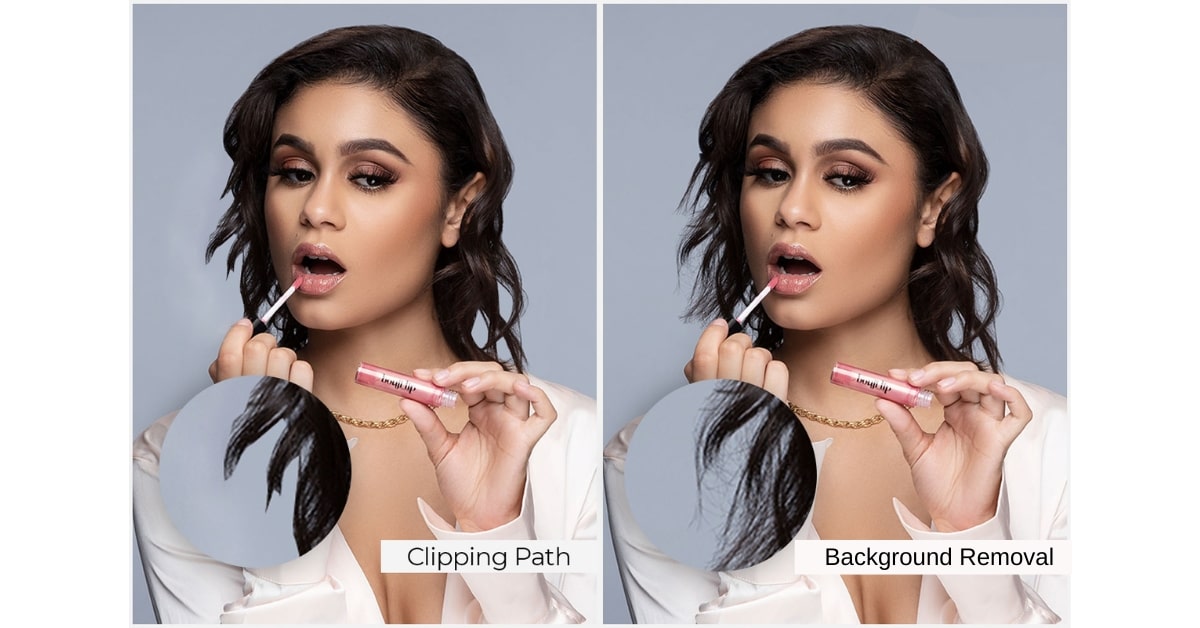In the world of image editing and graphic design, precision is essential. Two commonly used techniques to achieve this precision are clipping path and background removal. While they may seem similar, these methods serve distinct purposes and are applied in different scenarios. In this article, we will explore the differences between clipping path and background removal, helping you understand when and how to use each method effectively.
Clipping Path: Definition and Purpose
A clipping path is a vector-based technique that involves creating a path around an object or subject within an image. The primary purpose of a clipping path is to isolate the subject from its background. This technique is often used in product photography, graphic design, and various creative projects to achieve precise object selection.
Background Removal: Definition and Purpose
Background removal, on the other hand, involves removing the entire background from an image, leaving only the subject. The purpose of background removal is to eliminate distractions and create a transparent or new background. This method is commonly applied in ecommerce, marketing, and various instances where a subject needs to stand out.
Key Differences Between Clipping Path and Background Removal
The primary differences between clipping path and background removal are as follows:
- Scope: The clipping path focuses on creating a path around the subject, retaining the original background. Background removal, on the other hand, eliminates the entire background.
- Result: The clipping path results in a subject with a sharp and defined edge. Background removal produces an image with a transparent background or a new background.
- Applications: Clipping path is used for product photography, creating precise selections for design elements. Background removal is ideal for e-commerce, marketing, and situations where the subject needs to be placed in a different context.
- Complexity: The clipping path is suitable for simple and complex objects alike. Background removal is often applied to subjects with intricate details that need to be preserved.
When to Use Clipping Path and Background Removal?
Clipping paths are ideal for intricate object isolation, while background removal suits more versatile needs. Choose based on the complexity of your project and the desired image outcome.
Use Clipping Path When
- You need to keep the subject with its original background.
- Precise selection of the subject is required, such as for graphic design elements.
- You want to maintain the subject’s edge with no background removal.
Use Background Removal When
- You want to eliminate the entire background and create a transparent or new background.
- The subject needs to be placed in a different context or environment.
- The image contains intricate details or complex objects that need background removal.
Tools and Software for Clipping Path and Background Removal
- Clipping Path: Adobe Photoshop is the primary tool for creating clipping paths. The Pen Tool is commonly used to define paths around objects.
- Background Removal: Background removal can be achieved using software like Photoshop, but it may require additional tools or software that offer advanced selection and masking features.
Conclusion
Understanding the differences between clipping path and background removal is crucial for making informed decisions in photo editing and design. These techniques serve unique purposes and cater to different needs. By selecting the right method for your project, you can achieve the desired results and ensure your subjects and designs stand out with precision and clarity.
FAQs
Q1. Can I use the same software for both clipping path and background removal?
A1. Yes, you can use software like Adobe Photoshop for both techniques.
Q2. Is one technique more time-consuming than the other?
A2. The time required for both techniques depends on the complexity of the image and the software’s capabilities. Complex background removal may take more time.
Q3. Are there limitations to the types of images that can be edited with these techniques?
A3. Both techniques can be applied to a wide range of images, but their effectiveness depends on factors like image complexity and the desired result.
Q4. Can I apply a clipping path to a subject after background removal?
A4. Yes, you can apply a clipping path to a subject after background removal if you need to maintain a sharp edge while placing the subject in a new context.
Q5. Are there cost differences between these techniques when outsourcing image editing?
A5. The cost can vary based on the complexity of the image and the service provider. Background removal may be slightly more expensive due to its complexity.
This page was last edited on 19 February 2024, at 4:50 pm
